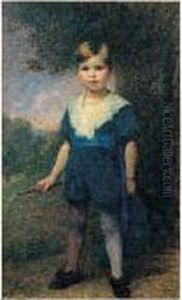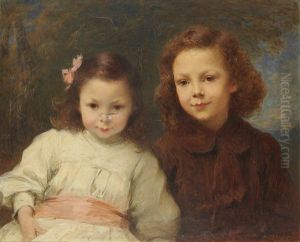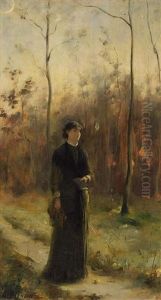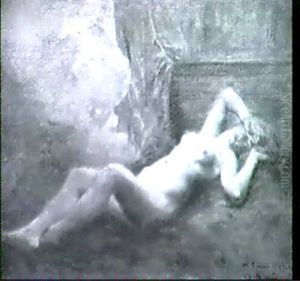Charles Auguste Mengin Paintings
Charles Auguste Mengin was a French painter whose life and works spanned the late 19th and early 20th centuries, a period marked by significant transitions in artistic styles and movements. Born in 1853, Mengin emerged as a talented artist in an era that was witnessing the gradual shift from traditional academic art towards more avant-garde movements such as Impressionism and Post-Impressionism. Despite these evolving artistic trends, Mengin's work largely remained rooted in the academic tradition, reflecting his training and the influence of his predecessors.
Mengin is perhaps best known for his painting 'Sappho', which was exhibited at the Salon in 1877 and garnered considerable attention. This work, depicting the ancient Greek poetess Sappho looking contemplatively out to sea, is emblematic of Mengin's style, which combined classical themes with a romantic sensibility. His attention to detail, use of rich colors, and ability to convey deep emotion through his subjects, place him within the tradition of 19th-century academic art, even as the art world around him was changing.
Throughout his career, Mengin exhibited his works at various Salons, earning accolades and recognition for his contribution to French art. His paintings often explored historical and mythological themes, showcasing his interest in the past and its influence on the present. This focus on classical and romantic subjects was somewhat at odds with the direction in which the art world was moving at the time, towards a more impressionistic and abstract representation of reality.
Despite not being as widely recognized today as some of his contemporaries, Mengin's work remains an important part of the history of French art. His paintings are held in various collections and museums, testament to his skill and the beauty of his work. Charles Auguste Mengin passed away in 1933, leaving behind a legacy that, while perhaps not as celebrated as some, is nonetheless a significant contribution to the artistic heritage of France.







